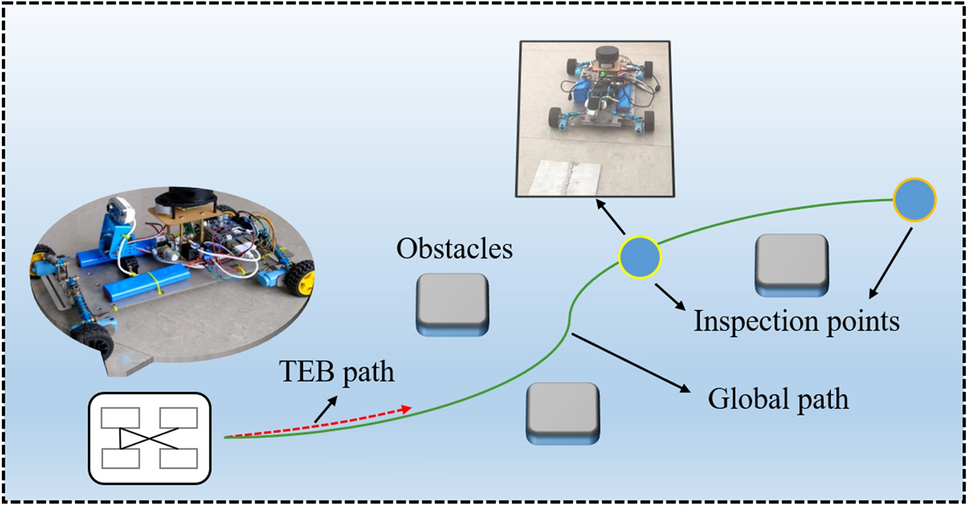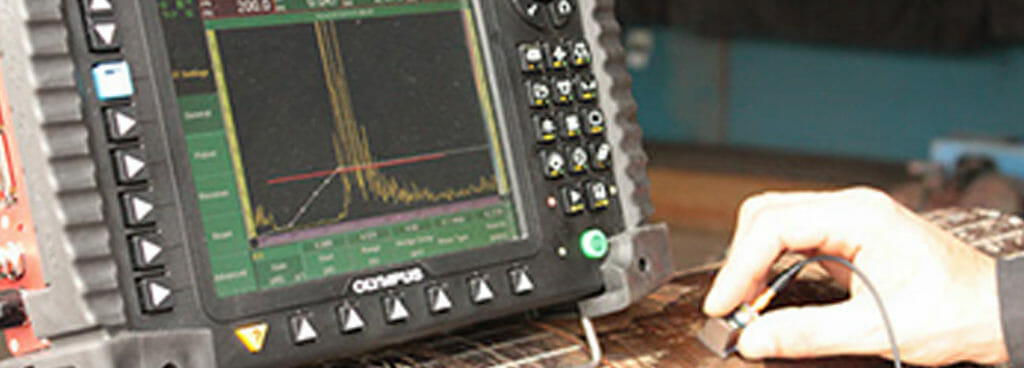The Role of Welding Inspection Racine in Stopping Structural Failures
The Role of Welding Inspection Racine in Stopping Structural Failures
Blog Article
Cutting-edge Approaches to Fillet Weld Inspection and Testing: Enhancing Weld High Quality and Conformity Requirements
In the realm of welding, the top quality and stability of fillet welds play a crucial duty in making sure the structural soundness and integrity of different industrial elements. With the constant drive for boosted effectiveness and conformity with stringent criteria, the expedition of ingenious approaches to fillet weld examination and testing has actually ended up being essential.
Advanced Non-Destructive Screening Methods
Making use of advanced technologies, progressed non-destructive testing methods play a vital role in making certain the integrity and high quality of fillet welds. These approaches, such as phased range ultrasonic screening (PAUT) and magnetic particle screening (MPT), deal comprehensive understandings into the weld's interior structure without creating any damages to the material. PAUT, for example, utilizes multiple ultrasonic aspects to evaluate the weld from various angles, supplying an extensive visualization of possible defects like lack of blend or cracks.
By utilizing these innovative non-destructive testing strategies, weld assessors can accurately assess the top quality of fillet welds, guaranteeing compliance with industry standards and policies. The capability to detect imperfections early on not only boosts weld top quality however additionally protects against expensive rework or failures in architectural stability, underlining the value of these innovative screening methods in welding assessments.
Robotics and Automation in Evaluation
The combination of robotics and automation has reinvented the evaluation process for fillet welds, boosting performance and accuracy in high quality evaluation. Robotics provide exact control and repeatability in checking welds, making sure reputable and consistent outcomes. Automated systems can be configured to follow certain evaluation paths, ensuring thorough protection of welds and lowering the threat of human mistake.
Robotic assessment systems furnished with sophisticated sensing units can detect and measure weld features with high precision, offering thorough information for analysis. These systems can recognize issues such as cracks, lack of blend, and porosity, allowing punctual corrective actions to be taken. Furthermore, robotics and automation permit real-time data collection and analysis, supplying prompt feedback to operators and promoting fast decision-making processes.
Additionally, using robotics and automation in fillet weld evaluation enhances general productivity by minimizing inspection times and enhancing assessment throughput. By enhancing the assessment procedure, producers can make sure weld top quality and conformity standards are satisfied successfully, inevitably leading to set you back financial savings and boosted item top quality.
Making Use Of Expert System for Analysis
Artificial intelligence plays a crucial duty in enhancing the performance and accuracy of evaluation in fillet weld evaluation procedures. AI algorithms can rapidly refine huge amounts of information from weld inspections, finding problems or incongruities that might be challenging to recognize with the nude eye - Welding Inspection Racine.
In addition, AI systems can gain from past assessment data, continuously improving their capability to recognize possible flaws and inconsistencies in fillet welds. This adaptive discovering capability boosts the overall top quality have a peek here control process, decreasing the possibility of human mistake and ensuring that welds meet the needed standards. By incorporating synthetic knowledge into fillet weld analysis, markets can achieve higher levels of efficiency, consistency, and compliance in their examination practices.
Portable Equipment for On-Site Inspection
 Enhancing here field assessment performance, the adoption of mobile devices changes on-site evaluation procedures for fillet welds. These tools supply flexibility and benefit, enabling assessors to perform thorough evaluations in numerous locations, including remote or difficult settings. Portable tools such as ultrasonic screening tools, magnetic fragment examination tools, and electronic radiography systems offer real-time data and high-resolution imaging abilities, allowing quick decision-making and immediate feedback on weld high quality.
Enhancing here field assessment performance, the adoption of mobile devices changes on-site evaluation procedures for fillet welds. These tools supply flexibility and benefit, enabling assessors to perform thorough evaluations in numerous locations, including remote or difficult settings. Portable tools such as ultrasonic screening tools, magnetic fragment examination tools, and electronic radiography systems offer real-time data and high-resolution imaging abilities, allowing quick decision-making and immediate feedback on weld high quality.One substantial benefit of portable devices is their capacity to enhance evaluation treatments, minimizing downtime and improving total performance. Examiners can conveniently transport these devices to various task sites, removing the demand for delivering heavy machinery or components to off-site centers. Furthermore, the portability of these devices advertises cost-effectiveness by lessening transportation expenditures and increasing evaluation timelines.
In addition, making use of portable tools for on-site inspection promotes proactive quality control measures, as examiners can promptly recognize and deal with any kind of prospective welding defects or disparities. By integrating these innovative technologies right into on-site examination techniques, welding experts can ensure compliance with sector requirements and improve weld quality, inevitably leading to improved structural honesty and security in various welding applications.
Combination of Information Management Solution
Having enhanced on-site assessment procedures through the use of mobile devices, the following phase includes the smooth integration of data monitoring systems to further enhance performance and data analysis abilities in fillet weld examination and testing. Welding Inspection Racine. By incorporating data monitoring systems into the assessment procedure, companies can enhance data collection, storage, and evaluation. This assimilation enables real-time monitoring of weld quality, instant recognition of flaws, and punctual decision-making to rectify any issues that may my website arise throughout the examination procedure
Data monitoring systems play an important duty in streamlining assessment information, promoting very easy accessibility for accredited workers, and making sure information stability and safety and security. With the assimilation of these systems, inspectors can produce thorough reports, track historical data for fad evaluation, and improve overall procedure performance. The combination of information administration systems allows seamless interaction between different stakeholders entailed in the examination procedure, fostering cooperation and boosting overall top quality control actions. Inevitably, the assimilation of data monitoring systems offers to elevate the criteria of fillet weld assessment and testing, ensuring conformity with industry laws and improving weld quality.
Final Thought
Finally, innovative strategies to fillet weld assessment and testing have actually substantially improved weld top quality and compliance standards. Advanced non-destructive testing approaches, robotics, automation, expert system, portable devices, and data administration systems have actually revolutionized the method weld assessments are carried out. By making use of these technologies, industries can guarantee that welds satisfy the called for high quality criteria and policies, inevitably enhancing total efficiency and safety and security in welding processes.

By employing these advanced non-destructive testing techniques, weld inspectors can accurately evaluate the high quality of fillet welds, ensuring compliance with market criteria and regulations. Portable devices such as ultrasonic screening gadgets, magnetic particle evaluation equipment, and electronic radiography systems provide real-time data and high-resolution imaging capacities, enabling fast decision-making and instant comments on weld quality.
Having maximized on-site evaluation procedures with the application of mobile tools, the next stage involves the seamless combination of data management systems to better boost effectiveness and data evaluation capacities in fillet weld inspection and testing (Welding Inspection Racine). Ultimately, the integration of data management systems serves to raise the standards of fillet weld examination and testing, making sure conformity with sector policies and enhancing weld quality
 In verdict, cutting-edge techniques to fillet weld evaluation and testing have actually considerably enhanced weld high quality and compliance criteria.
In verdict, cutting-edge techniques to fillet weld evaluation and testing have actually considerably enhanced weld high quality and compliance criteria.Report this page